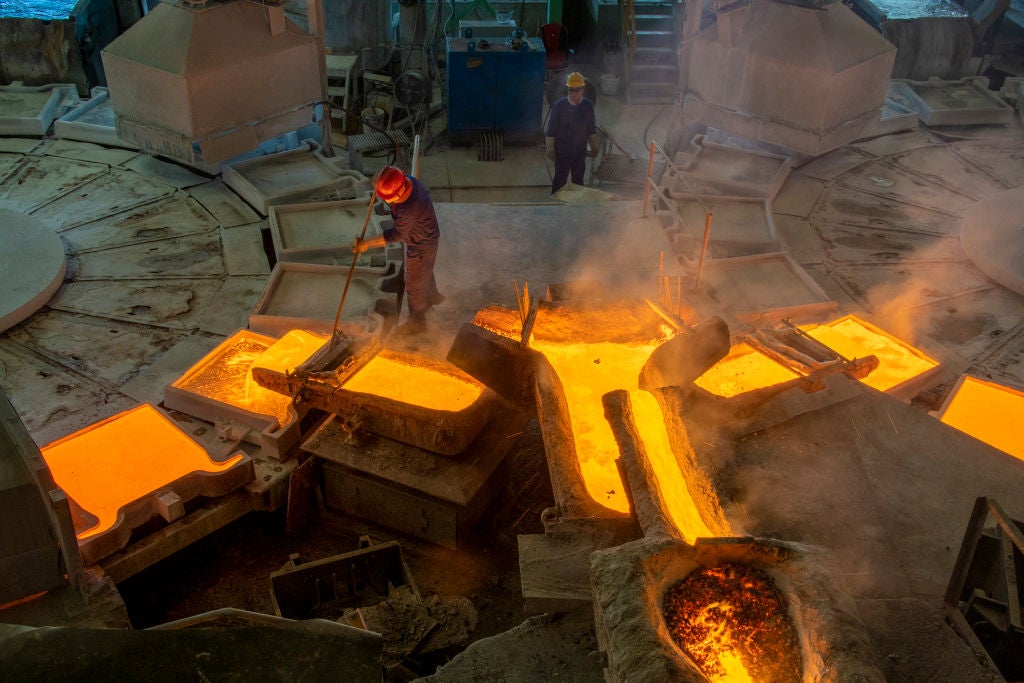
The Covid-19 pandemic caused overall foreign direct investment (FDI) project numbers to decline by 17.4% in 2020, when compared with 2019 figures. Most sectors were negatively impacted by the virus, and metals and minerals followed the trend. Overall growth in FDI project numbers decreased by 26.2% between 2019 and 2020.
The sector faced a steep fall in many commodity prices in early 2020, which evolved into record highs later in the same year. Indeed, Covid-19 has made much of the metals and mineral market unpredictable, with 2021 price rises inciting rumours of a new commodity ‘supercycle’, which would mean a sustained period, usually more than a decade, of increased commodity demand.
The rising (but volatile) commodity market, teamed with the pressing demand for climate-friendly energy solutions (the majority of which are dependent on accessing the necessary metals and minerals), have made for a complex FDI story for the sector.
Out of 523 metals and minerals FDI projects between 2019 and 2020, the majority were new projects at 362, with 161 being expansion projects.
Leading regions for metals and minerals
Across 2019 and 2020, the US was the leading location when it came to attracting FDI projects in metals and minerals. The country held the majority of greenfield FDI with 81 projects, followed by Germany (67) and Mexico (31).
South America and North America were the only regions to record growth in metals and minerals projects between 2019 and 2020, with 53.8% and 8.7%, respectively. All other regions recorded a decrease in projects ranging from -12.8% for Western Europe to -67.8% for Asia-Pacific.
According to GlobalData’s database, Germany had the highest number of outbound FDI projects across the two-year period with a total of 54, an increase of 7.7% between 2019 and 2020. The US was second with 53 projects (a decrease of -44.1%) and the UK was third with 43 projects (-34.6%).
In June 2022, Rio Tinto announced a $10m strategic equity investment in Canadian battery storage manufacturer Nano One. The strategic partnership’s key objective is to provide iron and lithium products and to assist Nano One’s cathode process technologies.
Meanwhile, the US and Canada have joined with other countries (Australia, Finland, France, Germany, Japan, South Korea, Sweden, and the UK, as well as the European Commission), in a bid to secure the supply of critical metals and minerals that are crucial to battery manufacturing.
Key subsectors in metals and minerals
Metals and minerals FDI tended to focus on the mining of basic precious and non-ferrous metals, with 80 FDI greenfield projects focused on this between 2019 and 2020. This subsector witnessed a decrease in growth of 43.1% between 2019 and 2020.
The second most important subsector was basic iron and steel, with 70 projects and a decrease between years of 25%, and the third was 'other fabricated metal products', with 52 projects and a decrease of 25.7%.
Top functions in metals and minerals
The top function for the metals and minerals sector was manufacturing, with 287 total projects during the two-year period; however, this saw a 29% decrease in growth between 2019 and 2020. Sales, administration, and marketing was second with 130 projects, with a 22% decrease between the two years. Lastly, extraction was in third place with 36 projects and a decrease of 36% between years.
Many sectors are expected to have recovered quickly in 2021 as the post-Covid-19 era begins. The new commitment between Canada and the US is promising for the recovery of metals and minerals, particularly when considering that North America and South America were the only two regions to see growth during the pandemic.
This renewed vow to strengthen the supply of battery metals will require heavy investment into the metals and minerals sector, with a huge focus on the subsector of extraction.
Despite the Asia-Pacific region seeing the biggest decrease in growth, China remained in fourth place for inbound FDI projects with 22 and for outbound FDI projects with 38. It is quite clear that the drive towards renewable energy solutions will continue to highlight the importance of investment into the metals and minerals sector, which will likely drive long-term recovery from Covid-19 for the industry.



